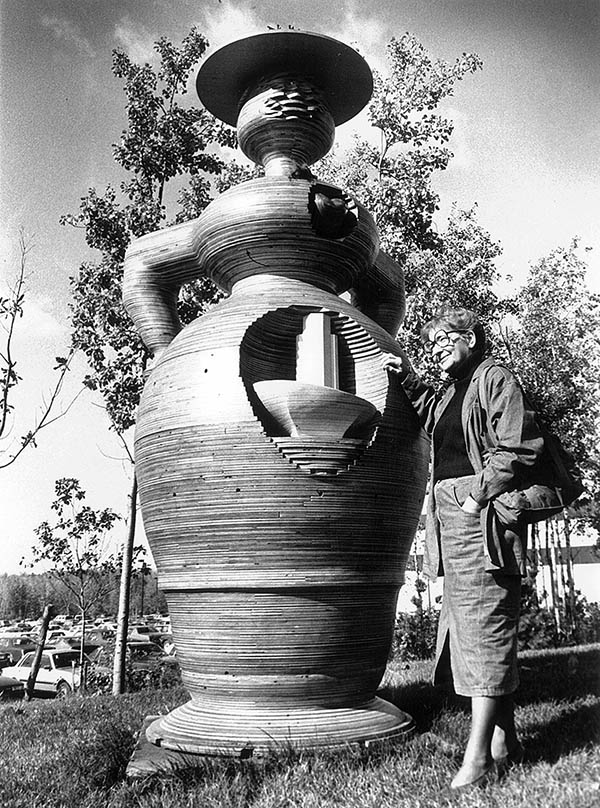About
In 1927 at Albany NY, Marjorie White (Williams) was born into a stressful period both economically and politically.
Her education at the Albany Academy and Skidmore College may have sheltered her from the greater turbulence but maturing in this environment left its mark.
Her young adult years were devoted to teaching art classes until she married (Frank J. Williams Jr.) taking ten years off to raise their three children. In 1945 she resumed her teaching career until retiring in 1976.
But this was not a classic retirement. At the age of 49 she joined students less than half her age to enter a demanding Masters Program. Finally able to fully focus her creative energy, she produced complicated works that reflected her unique yet universal life experience.
She did not waste time looking at trends or what other artists were inventing, her vision was clear.
That she was a woman and of “mature years” seen as negatives by much of 1970s society, became her greatest strengths. Her life was rich with experience having witnessed half a century of monumental events coupled with personal joy and struggles. Most of her work dealt with the effects of that history on one strong, thoughtful woman.
Plywood is an unlikely choice of medium for a woman but perfect for Williams, who loved the challenges both physical and mental. Following her detailed drawings, she was able to seemlessly construct and connect individual parts of each sculpture providing ease of assembly and transportation.
The combination of cast acrylic with the signature laminated plywood brought another dimension that she explored and mastered. Her confidence in choice of materials and exacting process may have been due to the influence of her architect father.
Self portrait, toy, birth, children and women as vessels and/or supports are some of the recurring images used to tell her story. The self portraits and female references seem torn between nurturing and being swallowed by the external demands of society.
The struggle with the joy that children bring is countered by the overwhelming responsibility.
I do not believe Williams was a conscious feminist, not that she didn’t care about the movement but she had limited time to leave her legacy and the demands were great. Without intention, her voice captured a generation of women not able to articulate their own plight.
In 1981, Williams wrote,
“Do we become the truth of what our inner self is,
or does that atrophy,
and we become the doll-like facade
that is projected by peer, parent, teacher, society, etc”.
When all is said and done, Williams transformed her deeply held personal emotions, observations and quandaries into a significant body of work.
This unique voice of a generation is her gift to us.
Our responses will be as varied as our individual frame of references.
—Janis Keane Dorgan
Former Curator Rice Gallery Albany Institute of History & Art Albany NY
See also:
Marjorie White Williams: Galleries & Exhibition »
Marjorie White Williams: Collections »
